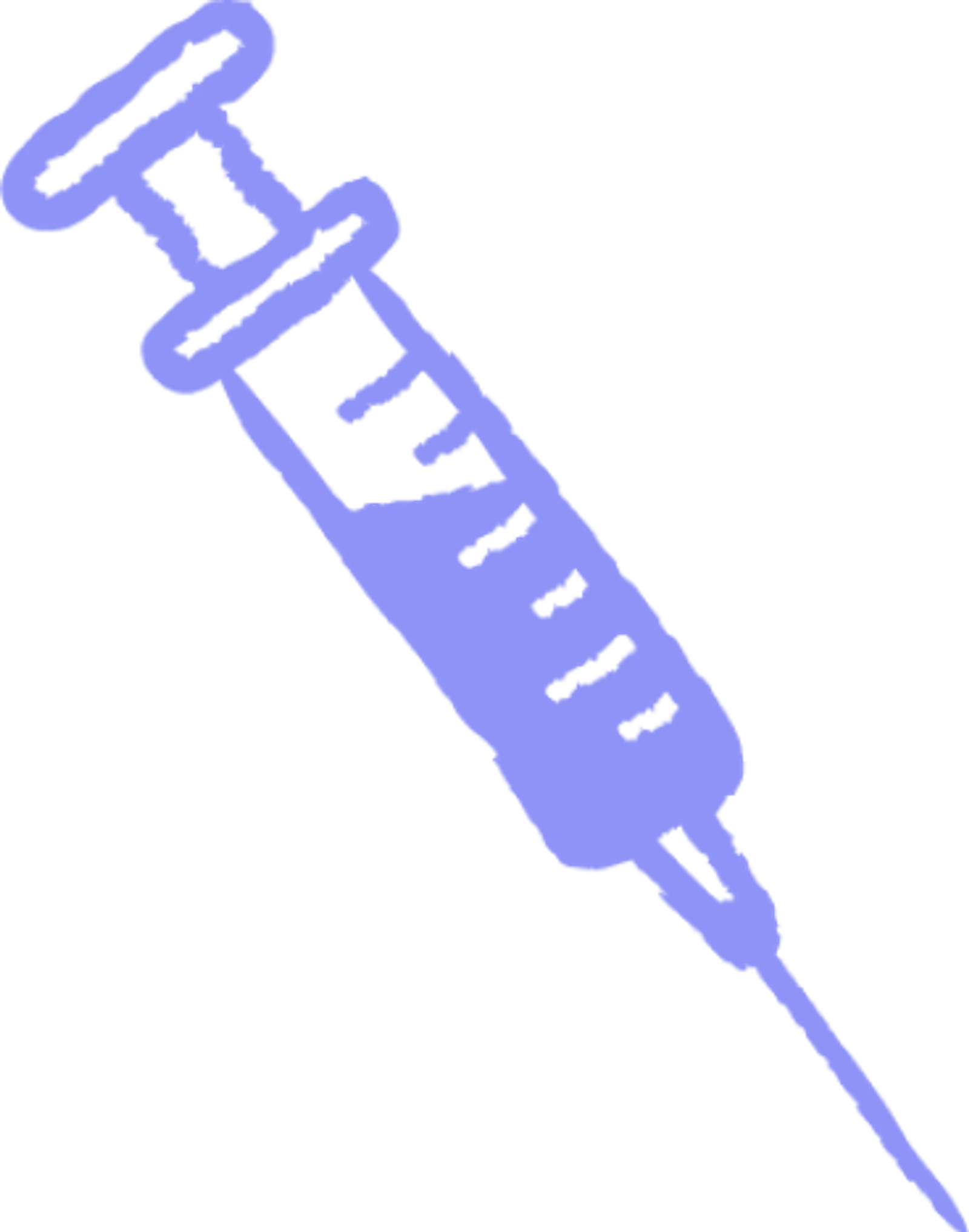Plasma 101
Who: Eligible donors between 18 and 64 can earn up to $560 a month in NY and up to $770 a month in FL.
What: Plasma is the yellow part of your blood that replenishes naturally.
Where: Queens, Brooklyn, The Bronx (NY), and Ft. Pierce (FL).
Why: Get paid to donate and help treat bleeding disorders, immune deficiencies, and more.
When: No appointment needed—walk in anytime before closing.
First Time Donating Plasma? What to Expect

First Time Donating Plasma? What to Expect
Wondering what plasma donation is like for your first time? Preparing properly ensures the process goes smoothly while letting you give back and earn at the same time. This article details every step - from medical checks ensuring you’re eligible to donate, understanding how the high-tech plasmapheresis machine works to safely collect plasma, what you’ll experience during your session, to self-care afterwards for quick recovery.
The first plasma donation takes about 2 hours. After checking in, you'll have a health screening, mini-physical, and finger prick blood test. If cleared, a needle is inserted to extract 500-600mL plasma over 45-60 minutes while you relax. Stay hydrated after and avoid strenuous activity for 6 hours to aid recovery.
Preparing for Your First Plasma Donation:
Title | Details |
Dietary Guidelines | Eat a balanced, protein-rich diet (eggs, meat, dairy, beans, nuts, tofu). |
Hydration and Plasma Guidelines | Drink plenty of non-caffeinated fluids like water and 100% fruit juice. |
Importance of Rest | Aim for 7-9 hours of sleep the night before your appointment. |
Documents to Bring | Photo ID, proof of address, social security documentation. |
Health Screening | Plasma donation and your health - Complete a health questionnaire and undergo a brief physical exam. |
Preparing for Your First Donation
Dietary and Hydration Guidelines for Donors
There are do’s and don't's to plasma donation. What you eat and drink in the 24 hours leading up to your appointment can impact the donation process. Focus on eating a balanced, protein-rich diet and staying well hydrated.
Protein is especially key, as plasma contains helpful proteins that transport nutrients and antibodies throughout the body. Eating protein-rich foods like eggs, meat, dairy, beans, nuts, or tofu will help replace the protein lost during plasma donation. Staying hydrated is also vital, so be sure to drink plenty of non-caffeinated fluids like water and 100% fruit juice over the day before and morning of your visit.
Following Olgam Life's dietary and hydration guidelines will provide your body the fuel and fluids needed to comfortably handle the hour-long plasma donation while helping maximize the quality of plasma collected. It’s recommended that you follow these guidelines for a better plasma donation experience.
Importance of Adequate Rest Before Donation
Along with proper nutrition and hydration, getting sufficient rest is paramount when preparing to donate plasma. Aim for 7-9 hours of sleep the night prior to your appointment. Arriving well-rested will provide the energy needed to successfully complete the donation.
A body lacking adequate rest is already taxed, making plasma donation more difficult to handle. In terms of the risks of plasma donation, you may experience increased side effects like dizziness, nausea, or fainting if sleep-deprived. Well-rested donors tend to have an easier, quicker plasma donation experience.
So be sure to hit the hay early! Getting enough high-quality sleep will set you up for plasma donation success.
What Documents to Bring
To complete the plasma donation process, you will need to provide certain documents on your initial visit. Having these ready ahead of time will make your first appointment go smoothly.
Photo ID: A valid, government-issued photo ID like a driver's license or passport. This verifies your identity.
Proof of address: Bring a document less than 60 days old displaying your current home address. Examples include a utility bill, bank statement, or lease agreement.
Social security documentation: Your social security card, W-2 form, or last year's tax documents. This is needed to register as an Olgam Life donor.
You will also complete a health questionnaire and undergo a brief physical exam at your first appointment. Providing honest answers about your medical history allows Olgam Life staff to safely screen potential donors.
Having all necessary paperwork and your ID ready on arrival means you can complete administrative tasks quickly and start the donation process sooner! Make sure documents are easily accessible so your first plasma experience is fast and efficient.

The First Time Donation Experience
Arrival and Check-in at the Donation Center
So, let’s look at what to expect at the plasma donation center. Start by arriving at your scheduled appointment time at the Olgam Life donation center with all necessary documentation, including your photo ID, proof of address, and social security information. We recommend showing up 15 minutes early to get settled.
Upon entering, you will check in at the front desk by providing your ID and paperwork. After your documents are validated, you will fill out any remaining electronic registration forms and health history questionnaires on a sterile tablet.
Answering questions honestly about your health, lifestyle, travel history, and more allows Olgam Life staff to ensure donor eligibility and safety. All donor information is kept confidential per HIPAA laws.
Health Screening and Physical Examination
Before beginning the donation process, new donors must complete a health screening and mini-physical.
A small blood sample will be taken from your finger to test protein and hematocrit levels, which indicate your ability to donate plasma. Your blood pressure, temperature, pulse, and weight will also be recorded as vital sign benchmarks.
These measures allow Olgam Life to verify it is secure for you to donate plasma. As long as results fall within normal ranges, you will be cleared to move forward.
The Plasma Donation Procedure
How does plasma donation work? Once health clearance is confirmed, a staff member will escort you to a comfortable donor bed and provide a stress ball for you to squeeze during donation. They will then sterilize the inside of your elbow with an antiseptic wash.
You will undergo a quick venipuncture, where a sterile needle connected to plastic tubing is inserted into your arm vein. This tubing links to an automated plasmapheresis device that will separate plasma from your blood over the next 45-60 minutes.
During the donation, your blood is slowly drawn into the machine where a centrifuge spins it to divide the blood components. Your plasma is extracted and stored, then your red cells and other parts are returned to you along with a saline solution.
You simply relax during the process as your blood makes this cycle through the equipment multiple times, extracting 500-600 mL of plasma. A staff member monitors you the entire time, ready to pause donation if you feel faint or uneasy.
Once sufficient plasma is collected, the needle is removed and a bandage applied. From arrival to departure, first donations take about two hours. Subsequent visits only require 90 minutes once in our system!
The Plasma Donation Process and Post-Donation Care:
Title | Details |
Arrival and Check-in | Arrive on time with all necessary documentation. |
Health Screening | Blood sample for protein and hematocrit levels, vital sign benchmarks. |
Donation Procedure | Venipuncture, plasmapheresis over 45-60 minutes, 500-600 mL of plasma collected. |
Post-Donation Care | Hydrate and eat protein-rich foods, avoid strenuous activities for 6 hours. |
Monitoring Symptoms | Watch for dizziness, fainting, nausea, and contact medical help if severe. |

Post Donation Care and Recovery
Hydration and Nutrition Post-Donation
After completing your plasma donation journey, replenishing fluids is vital after plasma donation. Drink plenty of water, juice, sports drinks, or other non-alcoholic beverages over the next day. Consuming 16 ounces for every pound lost during donation is a good guideline. A nutritious meal is also encouraged shortly after donating.
As your plasma contains helpful proteins, aim to replace these by eating protein-rich foods. Great options include eggs, yogurt, beans, nuts, fish, poultry, or tofu. Fruits and vegetables are also important for restoration. This well-balanced nutrition, coupled with ample hydration, will refuel your body with the components it needs to bounce back rapidly.
Physical Activity and Rest
While moderate physical activity is fine after donating plasma, straining your body is not recommended. Give yourself about 6 hours of taking it easy post-donation - avoid strenuous tasks, exercising, or heavy lifting during this time. Getting ample rest allows your system to recoup.
Listen to your body; if you feel up to normal activity levels after several hours have passed, ease back into your routine. But take a break if you notice continued fatigue, lightheadedness or other off symptoms. Prioritizing rest and relaxation today means you’ll feel refreshed and recovered tomorrow.
Monitoring for Any Post-Donation Symptoms
Keep an eye out for any concerning symptoms in the hours and days following your donation, including dizziness, fainting, nausea, blurred vision, chest pain, numbness/tingling, and swelling/bruising around the venipuncture site.
Mild fatigue and weakness is common initially. If these symptoms worsen or other reactions develop, discontinue any activity and hydrate/snack. If symptoms last over 4 hours or seem severe, seek medical advice by calling your doctor or the donation center’s helpline.
While adverse reactions are very rare with today's modern procedures, monitoring yourself post-donation allows quick response just in case - helping ensure you bounce back in tip-top shape for next time! Report any issues to Olgam Life staff so they can best assist with recovery.
Understanding Plasma and Its Importance
Composition and Functions of Blood Plasma
Plasma is the largest component of your blood, making up about 55% of total volume. It is comprised of about 92% water along with vital proteins, nutrients like glucose, minerals, hormones, and clotting factors. The remaining cells like red and white blood cells and platelets are suspended within this fluid.
This straw-colored liquid acts as a transport system for cells and nutrients to circulate throughout the body. Plasma carries platelets involved in clot formation, albumin and other proteins that control fluid distribution between blood and tissues, and electrolytes like sodium and potassium that support nerve conduction, muscle function, hydration, blood pressure, and pH balance.
By flowing these components all through the circulatory system, plasma essentially acts like a courier delivering packages wherever needed to boost health and homeostasis.
Plasma in Medical Treatments
Given plasma’s role as a transport mechanism for clotting and regulatory factors, it has become an integral part of trauma treatment and managing various deficiencies.
Patients suffering severe blood loss from injury, childbirth complications or gastrointestinal bleeding rely on infusions of fresh frozen plasma to replenish what was lost. This provides essential fluids, proteins and clotting components necessary to recover.
Those with clotting disorders also benefit from plasma containing stable coagulation factors to prevent excessive bruising and internal bleeding episodes. Diseases involving low immunoglobulin levels require infusions of plasma rich in antibodies to boost immune function.
Burn victims additionally utilize donated plasma to obtain proteins vital for fluid retention, tissue repair and fighting infection. Plasma-derived therapies can also treat various neurological, respiratory, cardiac, liver and kidney disorders.
The multitude of clinical applications highlights why plasma extraction and donation is so invaluable. Its life-maintaining properties allow plasma-based treatments to quite literally rescue patient lives every single day.

Ideal Blood Types for Plasma Donation
The Role of Blood Types in Plasma Donation
Your blood type - A, B, AB, or O - is determined by the presence or absence of certain antigens on red blood cells. People with type O blood lack A and B antigens, while those with AB blood have both. Plasma does not actually have a type itself, but antigens can transfer to it from red blood cells.
This matters because your body sees unfamiliar antigens as foreign substances, causing potential transfusion complications. Therefore plasma containing only very widespread "universal" antigens can be given safely to most random patients.
Where does universal plasma come from? Those rare AB+ and AB- blood type individuals!
AB+ and AB-: Universal Plasma Donors
Individuals with AB blood have both A and B antigens by default. This means their plasma lacks antibodies against either of those proteins, allowing it to be transfused into recipients of any blood type without reaction.
In trauma situations requiring emergency plasma before a patient's blood type is confirmed, medics rely on these crucial AB+ and AB- donations to provide lifesaving treatment safely. Their universally compatible plasma buys time until matching blood is available.
Unfortunately, only about 3% of the population falls into these two special categories. With such sparse numbers, keeping sufficient AB plasma stock on hospital shelves is challenging. At Olgam Life plasma centers, we aim to register more of these universal donors to aid continuity for patients dependent on plasma-based therapies.
All blood types contain vital components that give life to others through donation. But AB heroes go above and beyond - their unique plasma can literally sustain ANYONE needing transfusions. An increase in AB donor registration means trauma teams can react faster by having this universal option readily available, helping save more lives when minutes matter most.
















